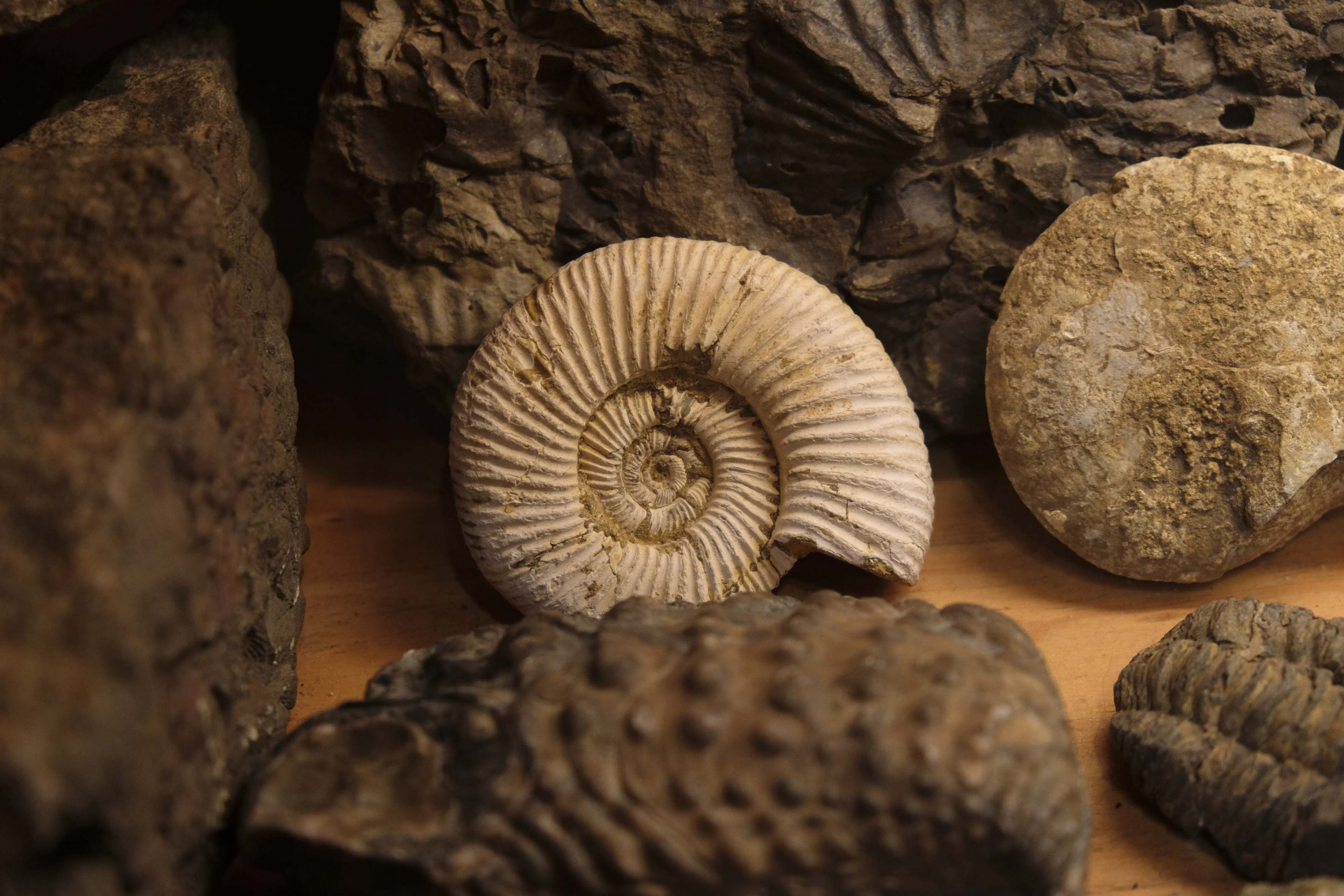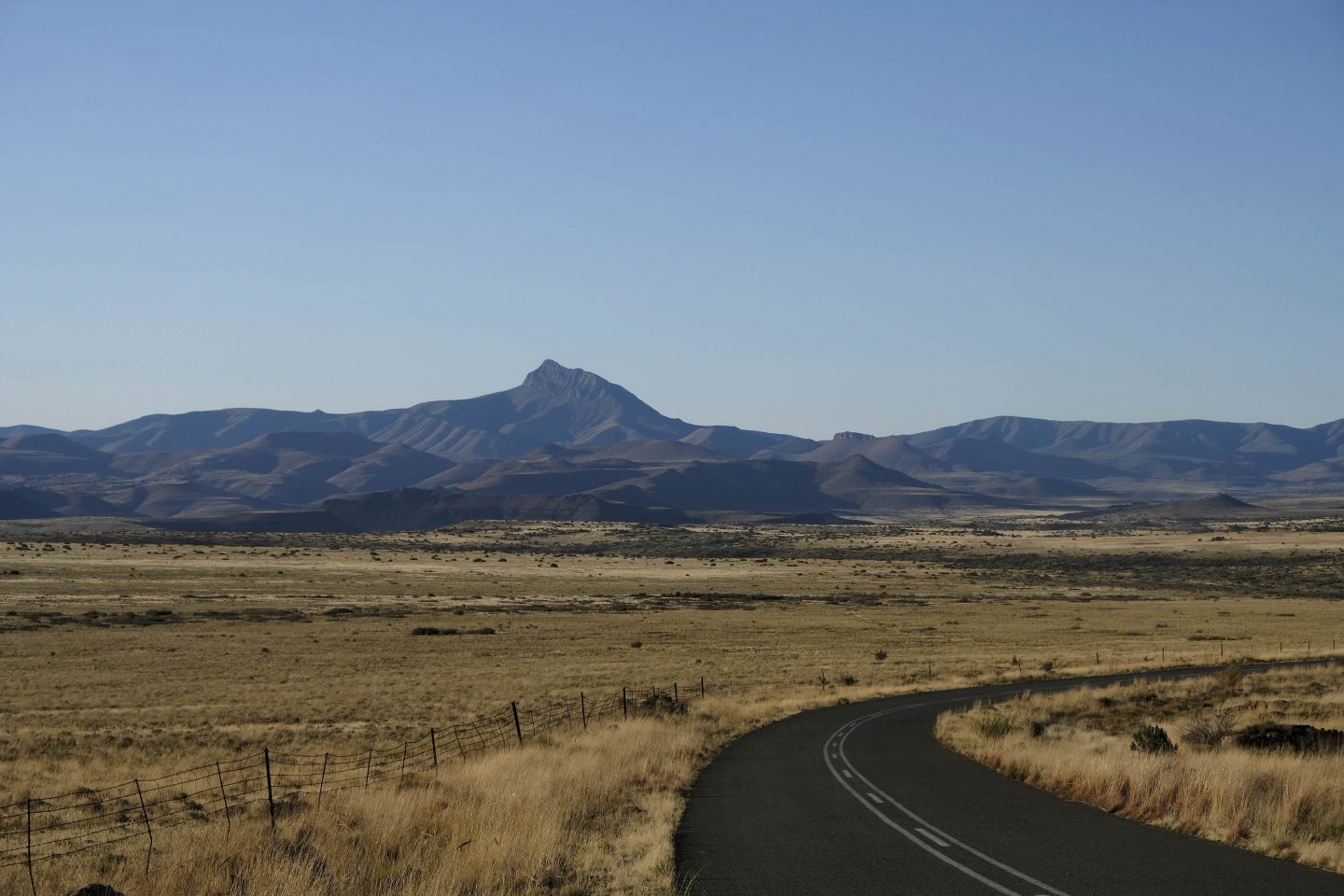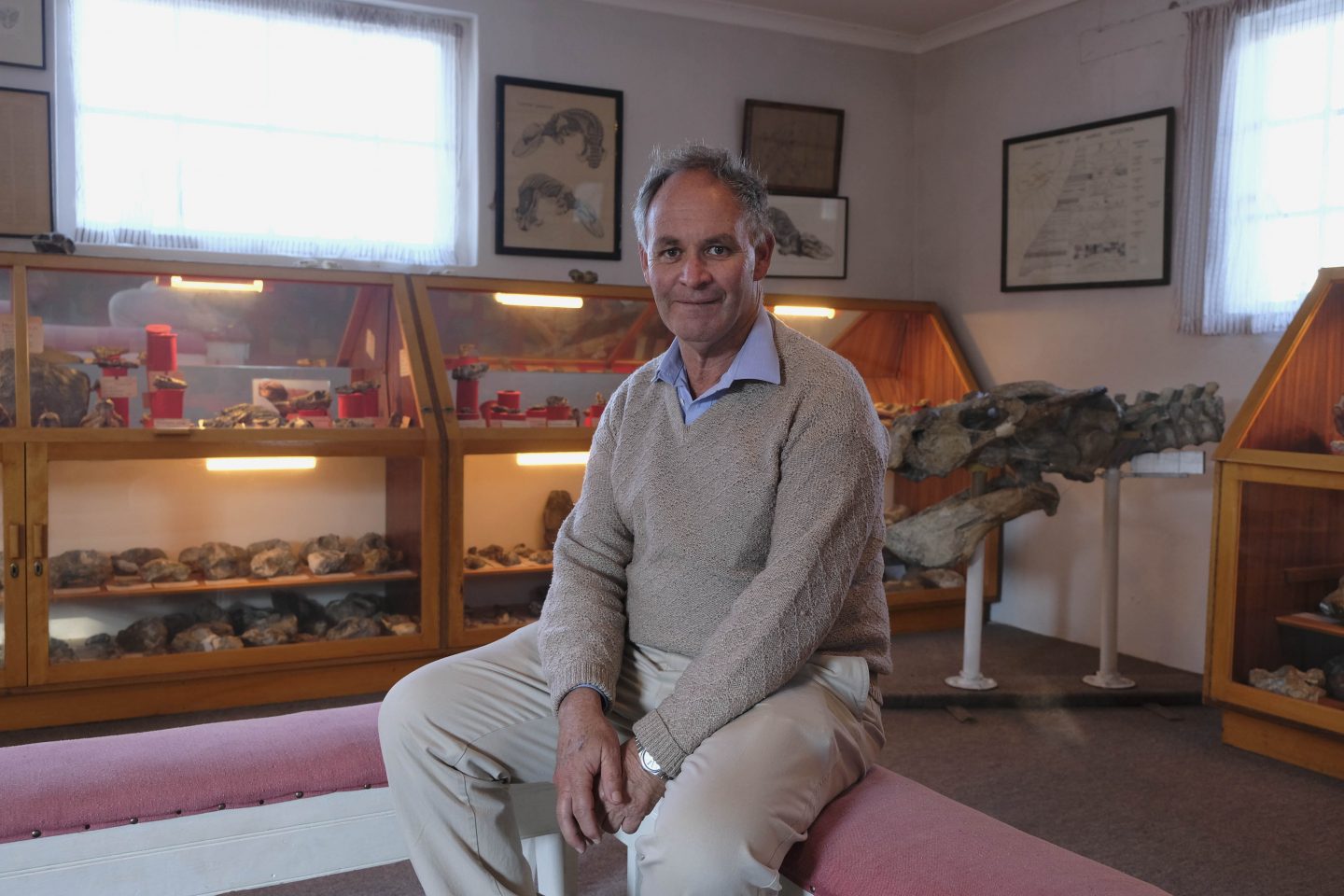Paleontology, and the future of our past
Amid a climate crisis, the ancient stories in South Africa’s fossils contain crucial lessons for the planet. But who the people are that reveal these stories is as important.
Author:
21 December 2020

South Africa is a story written in bones. Before they told of Africa’s contribution to humankind and a common ancestry, the country’s early hominid skeletons were used to prove European “supremacy” and justify colonial settlement.
Up to 1 000 bodies of the victims of apartheid’s political conflicts remain unfound, according to Madeleine Fullard, who heads the missing persons task team at the National Prosecuting Authority. The bones of thousands of migrant mine workers who died during the 20th century never made it home and remain buried in cemeteries near the mines, while generations of bodies are regularly cleared from graveyards to make way for new mines in this century.
But while bones are important records of South Africa’s past and present, they will also be crucial to explaining its future. As the arc of the climate crisis bends ever nearer to extinction, South Africa’s fossil record and the paleontologists interpreting it are uniquely positioned to paint a portrait of the runaway cascade of events that happens once the atmosphere warms beyond a certain point. They’ve seen it before.

Humanity has become a geological force on a planetary scale. We are now the primary reason that the earth changes in the ways it does. It is why many now call the current period in the planet’s history the Anthropocene.
While precise figures are contested, tens of thousands of species are dying out every year. Most scientists in the field agree that we are living through the planet’s sixth great extinction. During the five previous mass extinctions over the past half a billion years, anything between 16% and 90% of the earth’s species died.
Figures differ for the worst of these extinctions – the End Permian – but up to 90% of life was wiped from the ocean and 70% of life from land. It took about five million years before mature ecosystems recovered.

Mass volcanic eruptions
The strongest line of evidence suggests that the End Permian was climate driven. Mass volcanic eruptions over hundreds of thousands of years in what is today Siberia (the lava still covers much of northern Europe) released massive amounts of carbon dioxide into the atmosphere, while lava coming through the earth’s crust burned through ancient coal deposits, compounding spikes in carbon dioxide and temperature.
Defrosting tundra today, among others, is a sign that the past is also the prologue. We are now the volcanoes. We have burnt through carbon at a rate that might lead to the kind of ecosystem collapse that we can see only in the fossil record. The End Permian, says Rose Prevec, who heads the department of earth sciences at the Albany Museum in Makhanda, is “a very extreme version of what is happening today. And it’s a lesson that once things go past a certain point, there is complete collapse.”
Related article:
If the End Permian contains lessons, we are ill-placed to learn them. We may be living – and dying – through an accelerated exposure of the interconnectedness of species and the planet they live on, but humans are too short-lived to appreciate implications that play out over such a grand timescale.
We tend to assume the floor beneath us will never give way, much less the mountains around us. Our brains are wired to make sense of seasons. A year can be difficult to understand. We can barely conceive of the world 200 years ago; a million is beyond us. This inability to understand long periods of time is part of the reason that we have struggled to come to terms with the climate crisis.
What fossils can tell us
And here is where palaeontology’s contribution is acutely important. In fossils, it deals with the one archive that makes clear that the Earth’s landscape and atmosphere are up for change as much as anything. While the discipline is sometimes dismissed as blue-sky research, its studies into deep time make it clear that nothing is stable and that extinction is as likely a human horizon as any.
Eugene Bergh, a paleontologist at the Iziko Museum in Cape Town who specialises in marine invertebrates, is one of the researchers using South Africa’s fossil record to show how oceans, climates and environments have changed. By studying life forms from a time in the Earth’s distant past with similar climatic conditions to today, Bergh can tell how the Earth might respond to the effects of ocean acidification, sea level rise and global warming.

The shells of some of the tiny marine organisms that Bergh studies, for example, are easily dissolved in acidic water. Ordinarily, these carbonate shells take up carbon from the water and the Earth’s atmosphere. When they die they fall to the sea floor, where they are buried along with the carbon they have absorbed – a crucial process in regulating the planet’s delicate carbon cycle. But some of these creatures are currently going extinct because of how we are acidifying our oceans. Bergh’s studies can show us how carbon has changed over time, and how quickly marine creatures can bounce back from climatic catastrophes.
The Karoo is the jewel in the crown of all fossil records. Of the planet’s five previous extinction events, three – including the End Permian – have been preserved there. It is the only place in the world with an undisturbed record of life on Earth stretching from 300 to 180 million years ago, around the time that reptiles began diversifying into what would become mammals (and later humans), lizards, dinosaurs and tortoises. Other places have pieces, but South Africa has the whole jigsaw.
The layers of Karoo sediment visible against the koppies appear as immovable as stacks of dusty paper, at once inseparable and inconsistent. These are ancient rocks, some having formed in a glacial environment 300 million years ago (too old for the dinosaurs), and they contain the best terrestrial record of the End Permian anywhere in the world. Current research suggests that extinction may have lasted longer on land than it did in the oceans – exactly the sort of thing we need to know, according to Claire Browning, a colleague of Bergh’s at Iziko, in order to “better model and predict long-term changes in climate and how these might affect human populations”.

A vexed history
If the Karoo is the home of South Africa’s fossil record, in many ways it is also the birthplace of the study of that record. In the early 20th century, the Karoo and its fossils were the playground of Robert Broom. Famed for the discovery of Mrs Ples, Broom’s story is vexed. In her recent account of South African paleoanthropology, Darwin’s Hunch: Science, Race and the Search for Human Origins, Christa Kuljian details how, while the town physician at Port Nolloth, Broom decapitated the bodies of Khoi and San people in his kitchen before cooking the flesh off their skulls and sending them to Britain to establish whether they might be the “missing link” between apes and humans. The Scottish-born titan of South Africa’s scientific history also exhumed centuries-old graves, and dug new ones in his garden where he would bury fresh corpses to allow the worms to clean their flesh before he assembled their skeletons.
But before he took a shining to human origins, Broom was fascinated with the mammal-like reptiles preserved in the Karoo basin. And many were being found on a farm near the small Karoo hamlet of Nieu-Bethesda that had been in the Rubidge family since the 1840s.
Sydney Rubidge found some of the fossils himself. (It was Broom who encouraged Rubidge to keep hunting fossils and identified some of the 200-million-year-old bones.) He also bought many from Croonie Kitching, an impoverished Nieu-Bethesda road builder. Kitching, who used a span of donkeys to fill in potholes with blue gravel every day, would send his nine children into the veld around town to hunt for bones. One of these children, James, would go on to become one of South Africa’s most important paleontologists and fossil collectors.
If, in Broom and Kitching, a direct line can be traced from the Rubidge family farm to the foundations of South African paleontology, the farm is also intimately tied to the discipline’s present: Sydney’s grandson, Bruce, is now himself a global expert in the mammal-like reptiles that populate his grandfather’s fossil collection.
“I was born into this, so I grew up with a fossil collection right there,” says Rubidge. “In fact, I thought everybody had a fossil collection.” The descriptive tags that hang from many of the fossils in the Rubidge collection, which is still kept in a small room on the family farm, are filled out in Broom’s handwriting. All fossils are now part of the national estate, cannot be owned by any individual and must be available to the public on request.
Transformation and the future storytellers
Now nearing the end of a decorated 30-year career at the University of the Witwatersrand, where he headed the Evolutionary Studies Institute, Rubidge is a member of the strong patriarchy that has dominated the historically territorial and possessive discipline for decades. As he turns his focus away from the academy towards refashioning his grandfather’s fossil collection into a centre of new scholarship and paleo-tourism, Rubidge leaves behind a discipline in which Black students now outnumber white students, but whose sociology remains an open question.
Prevec maintains that “as far as racial transformation goes, we are absolutely appalling, still appalling”. Bergh also points out that, while both the transformation of the discipline and its technical capacities are on the right track, there remain “pockets of inequality, exclusion and marginalisation in certain places and situations”.
While the study of South Africa’s bones has progressed to explanations beyond the kinds of biological determinism that haunts its paleoanthropological recesses, the deeper institutional and bureaucratic roots of racism and sexism mean that, in paleontology, it largely remains white men who are telling the story.

According to Rubidge, “the academic mill is a hard mill”. With 10 years of study separating new Black students from their doctorate degrees, he says, it is still too early into South African democracy to see the full effects of transformation. “But they are getting there, and they are getting there fast.” The bottom line, he adds, is that “one has to be realistic about these things. One needs the qualifications in order to get the job. It’s as simple as that.”
Even qualified students, however, will not guarantee a transformed paleontology, Rubidge says. “The reality in paleontology is that there are not a million jobs, and so you’re waiting for somebody to die… There is an expectation in this country that when you get a doctorate, you’re automatically employed. That’s not the case. It never was the case and it still is not the case, because there aren’t that number of positions.”
Entrenched chauvinism
Science is always a love child of the social forces under which it unfolds, however, and the racialised educational mismatches that democratic South Africa inherited from apartheid have been compounded by a “lack of buy-in” from paleontology’s academic community, according to Prevec. The increase in the number of Black students has been offset by an “attitude of excellence” according to which the messy work of transformation and building a welcoming community have been seen to hold up high-quality research. The progress of Black students and women runs up against deeply entrenched cultural signifiers and combative, chauvinistic attitudes.


For Prevec, one of a cohort of women who have taken over leadership positions at museums previously dominated by men, there are more structural problems that need to be addressed. Paleontology, she hopes, is on the verge of an overdue introspection. Transforming a discipline that she says has been marked by a “misogynistic, racist, difficult environment” will be uncomfortable, but “anyone in South Africa who is not feeling uncomfortable is not doing their bit”.
South African paleontology, both in record and research, is celebrated the world over. But the full richness of discipline’s contribution is still ahead of it. According to Prevec, “we have scratched the surface and we have the wealth of fossils here. I think there are many generations of work to do.” And, with the impending collapse of the planet’s ecosystems, it is the one science that will be able to tell us how it happened before.
But if the study of our distant past is ever going to meet the demands of our present and future, the discipline must become as focused on the transformation of its institutional environments as it is on its world-leading research.



